Brahmanism › Brahmi Script › Egyptian Medical Treatments » Origins and History
Articles and Definitions › Contents
- Brahmanism › Origins
- Brahmi Script › Origins
- Egyptian Medical Treatments › Origins
Ancient civilizations › Historical places, and their characters
Brahmanism › Origins
Definition and Origins
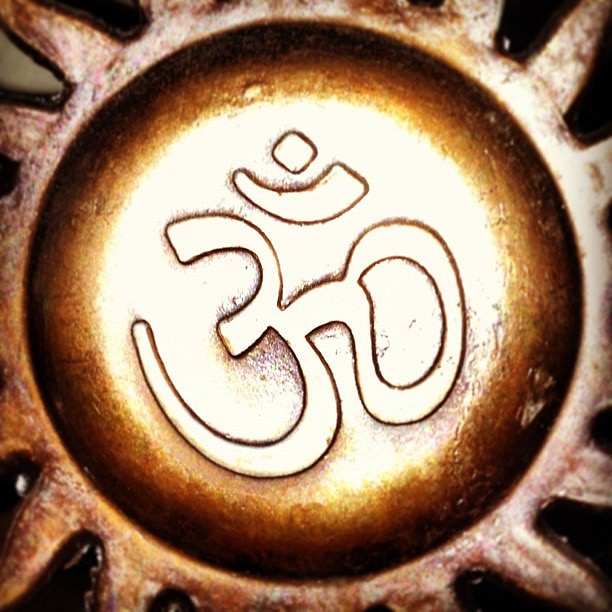
Brahmanism is an ideology and a way of life, originating from the history of the Vedas, often called a philosophy, practised on the basis of specific inferred beliefs. The fundamental and principle belief of Brahmanism defines Brahman and its attributeless element that was first captured by the Rishis who compiled the Vedas. "That which existed before creation, that which constitutes the existent whole, and that into which all creation dissolves is the all-pervading Brahman, and the cycle of creation, sustenance, and destruction of the universe is endless." (Kena Upanishad)
BRAHMAN, THE UNIVERSAL INTELLECT
The Vedic era thrived from 1500 BCE to 500 BCE in northern India on both sides of the Indus river. The Indus valley was civilised by the Aryans – the 'noble' ones – who worshipped nature. The Vedas originally believed in the concept of Sanatana Dharma (eternal order of life) where nature was worshipped with rituals and praise, which supposedly forms a significant part of the Vedas. The Vedas originated the ideology of Brahman, which became the central theme of those following the Vedas and its principles.
That which cannot be expressed by speech, but by which speech is expressed — That alone is known as Brahman and not that which people here worship.That which cannot be apprehended by the mind, but by which, they say, the mind is apprehended — That alone is known as Brahman and not that which people here worship.That which cannot be perceived by the eye, but by which the eye is perceived — That alone is known as Brahman and not that which people here worship.That which cannot he heard by the ear, but by which the hearing is perceived — That alone is known as Brahman and not that which people here worship. (Kena Upanishad)
Brahman as the Ultimate Reality, the Universal Intellect that is endless, without beginning, middle and end is a metaphysical concept which forms the basis of Brahmanism. Brahmanism is considered to be the predecessor of Hinduism. Brahmanism is the central theme and belief of Vedic followers, its thoughts and philosophical concept giving rise to the primary and socio-religious belief and conduct in Hinduism.
Since the inference and perception of Brahman were put forward by the Rishis, the ones who later became staunch followers of Brahmanism, they were considered, according to some, to be of priestly caste and were called Brahmans. They duplicated the ideology through teachings and performance of rituals, and thus Brahmanism came to be practised with vigour and unwavering determination. Brahmanism, as some researchers claim, is also said to have got its name from the Brahmans, who performed the Vedic rituals. Moreover, a Brahman priest is the one who is always engrossed in the thoughts of the eternal Brahman. Brahmanism, nevertheless, remains the most sought after ideology which baffles the interpretation abilities of the wisest preceptors and superior scholars and to this day remains an exhaustless mystery.
CORE CONCEPTS OF BRAHMANISM
The core concepts of Brahmanism are significantly aligned with metaphysics, questioning what is actually real, the validity of time, of being, of consciousness, and the origin and basis of all existence. Many scholars, such as archaeologists, geologists, Indologists, and philologists, have taken refuge in the writings of the Vedas, especially in the concept of Brahman since it is directly related to humans and their origin.
Brahman as the all-pervading, all-eternal, and the prime cause of 'all that moves and does not move', forms a major acceptance in Brahmanism. It rests on the belief that everything that ever existed, that exists now, and that is going to exist is a minuscule event in the all eternal universal reality, called Brahman. The Atman – the soul – forms the second most important concept in Brahmanism. The Atman is considered to be the source of all vitality among humans. The soul of a living being is considered to be self-same as Brahman itself, thus leading to the belief that a human who embodies the soul is no other than Brahman and has all the attributes of Brahman. The soul, thus identified to be identical with the Supreme Soul which pervades everything, forms a significant belief in Brahmanism. The Supreme Soul, which is never born yet is the reason for the birth of all, forms the underlying principle in Brahmanism, which expanded following the inference of Brahman.

A Drop of Water (Atman)
One soul is considered as self-same with the Supreme Soul, which is nothing but Brahman. This belief shows the influence of Brahmanism on Buddhism, Jainism, and Hinduism. Hinduism today is regarded nothing less than the progeny or an offshoot of Brahmanism, since Hindus got their name from Indus river, on the banks of which, the Aryans practised the Vedas.Hence, Hindus following the Vedas and its Brahman belief were seen as the first propellers of Hinduism.
INFLUENCE & INTERPRETATIONS
Brahmanism's famous but most ingrained influence is seen on Hinduism, in the sense and to the extent that Hindus do not distinguish between Brahmanism and Hinduism. Brahmins, a priestly caste privileged to practise the Vedic rituals are the carriers of the performance-based implementation of the ideology. They perform rituals and sacrifices described in the Vedas, including worship and praise of the forces of nature. Brahmanism today is a belief system well-researched among cosmologists trying to decipher the complexity of the universe and its likely origin.
BRAHMANISM IS CONNECTED TO & CONCERNED WITH THE FORCES OF NATURE, THE ORIGIN OF HUMANKIND & THE INHERENT MYSTERY ASSOCIATED WITH EVERY CREATURE.
Buddhism and Jainism have been considered to be offshoots of Brahmanism in terms of its ideology and principle beliefs, but they have fine-tuned it to their own interpretations. One following Brahmanism is most likely to believe unquestionably in the concept of rebirth of humans because the soul embodied by the human flesh would soon take refuge in a new body, a new avatar, to accomplish its unfulfilled desires. Buddhism does not believe in the concept of rebirth but has interpreted Brahmanism to the comfort that everything else is nullity in the universe except Brahman that alone exists and is eternal.Buddhists also defy and reject the belief of a human soul, stating that there is one undeniable living soul, and humans do not embody a soul but are full of suffering, constituting their impermanence. Likewise, Jainism adopts another interpretation of Brahmanism and places their reliance on the existence of soul, matter, time, space, dharma, and Adharma. In contrast, Brahmanism believes in the oneness of all beings and of all elements, forming the entity of Brahman, which is without any property or attributes. Thus, Buddhism and Jainism, though considered as offshoots, have deviated from the principle belief of Brahmanism and formulated their own understanding.
Brahmanism has a much more intellectual appeal than other ideologies/religions as it is connected to and concerned with the forces of nature, the origin of humankind, and the inherent mystery associated with every creature. Vedanta is one of the most influenced traditions or ideological forces that emerged from Brahmanism. It places its belief in non-duality and shuns everything that proposes the duality of existence, thus called as Advaita (non-dualism). Dvaita (dualism) in Vedanta, has also been influenced by Brahmanism and has a sect of followers. In addition, Yoga, a large and growing spiritual practice and discipline, has also been influenced by the philosophy of Brahmanism. Samkhya philosophy, relying on the three elements of perception, inference, and testimony from reliable scriptures to gain knowledge, has gained significant influence from Brahmanism regarding how knowledge is acquired and conduct is regulated.
Brahmi Script › Origins
Definition and Origins
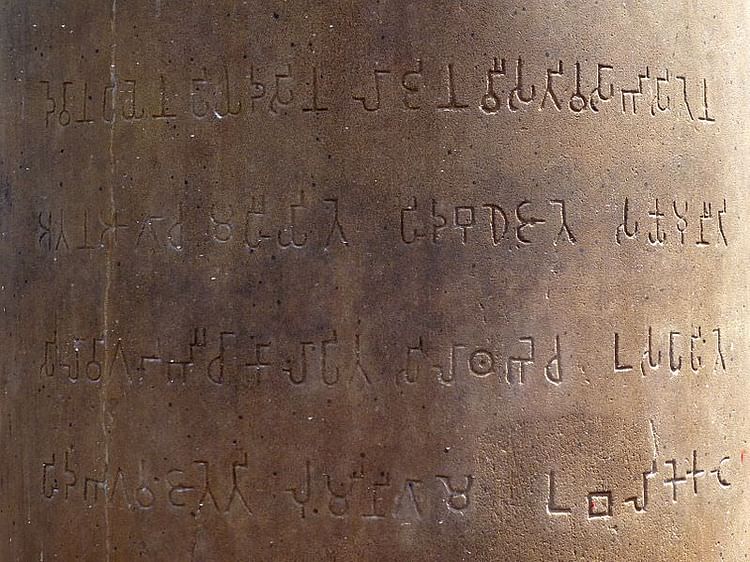
The Brahmi script is the earliest writing system developed in India after the Indus script. It is one of the most influential writing systems; all modern Indian scripts and several hundred scripts found in Southeast and East Asia are derived from Brahmi.
Rather than representing individual consonant (C) and vowel (V) sounds, its basic writing units represent syllables of various kinds (eg CV, CCV, CCCV, CVC, VC). Scripts which operate on this basis are normally classified as syllabic, but because the V and C component of Brahmi symbols are clearly distinguishable, it is classified as an alpha-syllabic writing system.
ORIGIN OF THE BRAHMI SCRIPT
One question about the origin of the Brahmi script relates to whether this system derived from another script or it was an indigenous invention. In the late 19th century, Georg Bühler advanced the idea that Brahmi was derived from the Semitic script and adapted by the Brahman scholars to suit the phonetic of Sanskrit and Prakrit. India became exposed to Semitic writing during the 6th century BCE when the Achaemenid empire took control of the Indus Valley (part of present-day Afghanistan, Pakistan, and northwestern India). Aramaic was the language of administration in the Achaemenid empire, and official records were written using a North Semitic script.

Greek and Aramaic inscriptions by king Ashoka
Around this time, another script also developed in the region, known as Kharosthi, which remained dominant in the Indus Valley region, while the Brahmi script was employed in the rest of India and other parts of South Asia. Although we are confident that Kharosthi is an adaptation of Semitic, the connection between Brahmi and Semitic remains unclear.
BY THE 2ND CENTURY BCE, THE BRAHMI SCRIPT BECOMES MORE WIDESPREAD & WE CAN ALSO DETECT THE RISE OF MARKED REGIONAL VARIATIONS.
Another position has been advanced by professor K. Rajan, who has argued that the precursor of the Brahmi script is a system of symbols found on graffiti marks located on several sites in Tamil-Nadu (South India). In this region, hundreds of graffiti either inscribed or carved on potsherds and rock have been found: some of these symbols are found at the end of Brahmi inscriptions. Dilip Chakrabarti supports the connection between graffiti marks and Brahmi based on evidence found at Vallam (South India), where the stratigraphic sequence has shown that only graffiti inscriptions were present in the lower levels, followed by a mix of graffiti and Brahmi script in the middle phases, followed by only Brahmi inscriptions in the latest strata. A similar picture has been produced by excavations at Mangudi, where only graffiti is found on early contexts, followed by examples of Brahmi script in the upper levels. Whether Brahmi truly derives from graffiti is hard to confirm but the connection between the two systems cannot be ruled out.
There is a third position that claims that Brahmi derives from the Indus script, a writing system employed in the Indus Civilization which fell out of use as this civilization came to an end. Those who support this hypothesis point out the resemblance between some of the signs of these scripts. Given the complete absence of material evidence linking both writing systems, this view seems both speculative and hard to verify.
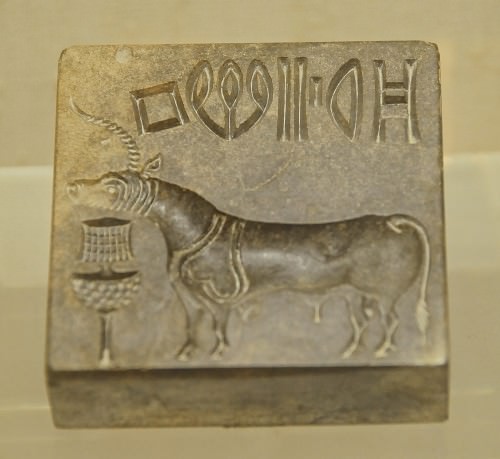
Unicorn Seal
Another question about the origin of the Brahmi script relates to its antiquity. Until a few decades ago, the earliest securely dated examples available of the Brahmi script dated back to the 3rd century BCE, during the time when India was ruled by the Mauryan dynasty. These examples were found on a set of royal rock inscriptions spread in North and Central India by the Indian emperor Ashoka (r. 268 BCE to 232 BCE), known as the Edicts of Ashoka or Ashokan Inscriptions.
Despite the lack of any earlier examples, some scholars argued that the Brahmi script had originated earlier than the 3rd century BCE. They supported such a claim on the basis of a number of observations. Firstly, the composition of a set of texts, the Brahmanas, which were attached to the Vedic literature during the 6th century BC. The Brahmanas are the only section of the Vedic corpus written mostly in prose, unlike the earlier sections of the Vedas which are hymns for recitation, specially design for oral transmission. The emergence of prose is hard to imagine without the support of writing technology. Further evidence comes from the work of Panini, the renown ancient Indian grammarian who composed an influential work on grammar analysis of Sanskrit during the 5th or 4th century BCE. It is unlikely that a work like this could have been produced in a preliterate context. Knowledge of writing in India is also recorded by writers who joined Alexander to India roughly a century before the time of Ashoka.

Ashokan Pillar Base, Sarnath
During the late 20th century CE, the notion that Brahmi originated before the 3rd century BCE gained strength when archaeologists working at Anuradhapura in Sri Lanka retrieved Brahmi inscriptions on pottery belonging to the 450-350 BCE period. The earliest of these examples are single letters, and their dates have been established through radiocarbon dating.The language of these inscriptions is North Indian Prakrit (Middle Indic), an Indo- Aryan language.
DEVELOPMENT OF THE BRAHMI SCRIPT
Most examples of Brahmi found in North and Central India represent Prakrit language. The Ashokan Inscriptions already show some slight regional variations on the Brahmi script. In South India, particularly in Tamil-Nadu, Brahmi inscriptions represent Tamil, a language belonging to the Dravidian language family, with no linguistic affiliation to the Indo-Aryan languages such as Sanskrit or Prakrit.
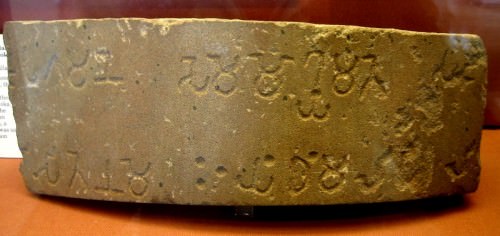
Pillar of Ashoka Fragment
Some Tamil examples come from inscribed potsherds found at Uraiyur (South India) dating to the 1st century BCE or the 1st century CE. In Arikamedu (South India) there is also evidence of an early form of Tamil in Brahmi inscriptions, dated to the early centuries CE. At this stage, different Brahmi characters specially adapted to suit Tamil phonetic were already in use.Examples of Tamil have not been identified among the earliest securely dated examples of Brahmi found at Anuradhapura in Sri Lanka, where the language represented is Prakrit.
By the 2nd century BCE, the Brahmi script becomes more widespread, and we can also detect the rise of marked regional variations.
MATERIAL FORM & USE
Ashokan inscriptions are found on carved rocks, caves, stones slabs, and rock pillars. We also have some examples of short Brahmi inscriptions on small seals made of ivory, bone, stone, and terracotta dated to Mauryan times. Other examples come from potsherds and copper plates. With the rise of Buddhism as the dominant faith in India, we find Brahmi inscriptions on monumental constructions known as 'donative records,' stating the names of different donors. The early 2nd century BCE saw the beginning of Brahmi inscriptions on coins.
The use of perishable materials as a writing medium is an ancient widespread practice in South Asia, particularly palm leaf and birch bark. As portable and affordable writing surfaces, these materials are ideal. Direct material evidence on the use of palm leaf and birch before the time of the Ashokan Inscriptions have not been found. This lack of direct evidence could have more to do with the bias of the archaeological record due to the destruction of evidence over time rather than the actual absence of a written tradition on perishable materials. Indirect evidence of the possible use of perishable writing surfaces has been retrieved at Sringaverapura in North India in the form of traces of birch wood, from levels dated to c. 10th to 7th century BCE period. D. Chakrabarti also mentions the presence of bone items described as possible stylus employed for writing on palm leaves and birch bark, but these objects could also have been arrows.
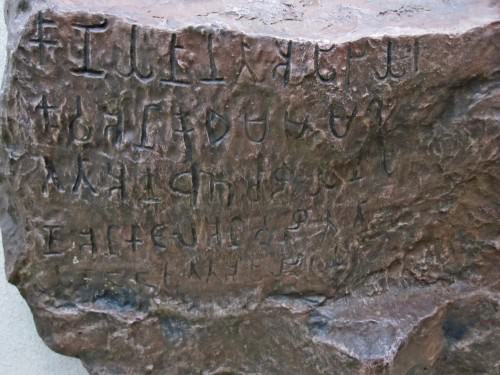
Mangulam inscription
The earliest identifiable use of Brahmi script found on ceramic surfaces was to indicate ownership of the item. Towards the mid-3rd century BCE, we see the first example of Brahmi being used for official communication in the production of seals and on the Ashokan Inscriptions. A few centuries later, Brahmi begins to be employed in religious contexts, both in architecture and for the transmission of religious texts.
If we accept the view that the use of Brahmi predates the earliest archaeological examples identified so far, then we could speculate that the earliest use of Brahmi was for the recording of commercial transactions and other forms or record-keeping.This is based on the fact that all over the world there is a tendency for writing systems to rise when the need of recording information becomes essential as a result of the rise of urbanism, social complexity, taxation, and increasing reliance on redistribution systems to support the growing demographic pressure. In North India, this process was well underway by the 7th century BCE. It would be unlikely that North India was able to develop and sustain such a level of social and economic transformation, including the rise of cities and kingdoms, in the absence of writing. If the work of Panini was produced with the aid of the Brahmi script, we could add that at some point during the 5th to 4th century BCE the system was refined and improved by the North Indian grammarians.
SCRIPTS DERIVED FROM BRAHMI
During its long history of development, there has been a large number of scripts derived from Brahmi. Many of the scripts derived from Brahmi have been adapted to suit the phonetic of several different languages, deriving in many script variations.The origin of numerous writing systems currently in use across Asia including the Gurmukhi, Kanarese, Sinhalese, Telugu, Thai, Tibetan, Javanese, and several others can be traced back to the Brahmi script.
Egyptian Medical Treatments › Origins
Ancient Civilizations
The ancient Egyptians experienced the same wide array of disease that people do in the present day, but unlike most people in the modern era, they attributed the experience to supernatural causes. The common cold, for example, was prevalent, but one's symptoms would not have been treated with medicine and bed rest, or not these alone, but with magical spells and incantations. The Ebers Papyrus (dated to c. 1550 BCE), the longest and most complete medical text extant, clearly expresses the Egyptian view of medical treatment: "Magic is effective together with medicine. Medicine is effective together with magic."The magic referred to took the form of spells, incantations, and rituals, which called on higher supernatural powers to cure the patient or treat symptoms.

Egyptian Woman Giving Birth
Heka was the god of magic and also of medicine, but there were a number of deities called upon for different diseases. Serket( Selket ) was invoked for the bite of the scorpion. Sekhmet was called upon for a variety of medical problems. Nefertum would be appealed to in administering aroma therapy. Bes and Tawreret protected pregnant women and children. Sobek would intervene in surgeries. One could call upon any god for help, however, and Isis and Hathor were also invoked, as was the demon-god Pazuzu. Even Set, a god associated with chaos and discord, sometimes appears in magic spells because of his protective qualities and great strength. All of these deities, however, no matter how powerful, had to be called by an experienced practitioner and this was the doctor of ancient Egypt ; part magician, part priest, and part physician.
INJURY & DISEASE
Physical injury was common in a culture which not only engaged in monumental building projects but had to contend with wild animal attacks from lions, hippos, jackals, and others. Injuries were easily recognized and treated in much the same way they would be today: bandages, splints, and casts. Since the Egyptians had no concept of bacteria or the germ theory, however, the cause of the disease was less clear. The gods were thought to mean only the best for the people of the land, and so the cause of a disease like cancer was as mysterious to the ancient Egyptians as the origin of evil and suffering is for religiously-minded people in the present.
ALTHOUGH THEIR UNDERSTANDING OF PHYSIOLOGY WAS LIMITED, EGYPTIAN PHYSICIANS SEEM TO HAVE BEEN QUITE SUCCESSFUL IN TREATING THEIR PATIENTS & WERE HIGHLY REGARDED BY OTHER CULTURES.
The most common reasons for disease were thought to be sin, evil spirits, an angry ghost, or the will of the gods to teach someone an important lesson. Although the embalmers who dissected the bodies at death were aware of the internal organs and their relationship with each other spatially in the body's cavity, they did not share this information with doctors, and doctors did not consult with embalmers; the two professions were considered distinctly different with nothing of note to contribute to each other.
Doctors were aware that the heart was a pump and that veins and arteries supplied blood to the body, but they did not know how. They were aware of liver disease but not the function of the liver. The brain was considered a useless organ; all thought, feeling, one's character, was believed to come from the heart. A woman's uterus was believed to be a free-floating organ which could affect every other part of the body. Still, although their understanding of physiology was limited, Egyptian physicians seem to have been quite successful in treating their patients and were highly regarded by other cultures.
MEDICAL TEXTS
The medical texts of ancient Egypt were considered as effective and reliable in their time as any modern day equivalent. They were written by physicians for physicians and presented practical and magical cures and treatments. They were written on papyrus scrolls which were kept in the part of the temple known as the Per- Ankh ('House of Life'), but copies must have been carried by individual doctors who frequently made house calls.
These texts today are all known by the names of the individuals who discovered, purchased, or donated them to the museums where they are housed. The primary texts are:
The Kahun Gynaecological Papyrus (c. 1800 BCE) deals with conception and pregnancy issues as well as contraception.
The London Medical Papyrus (c. 1782-1570 BCE) offers prescriptions for issues related to the eyes, skin, burns, and pregnancy.
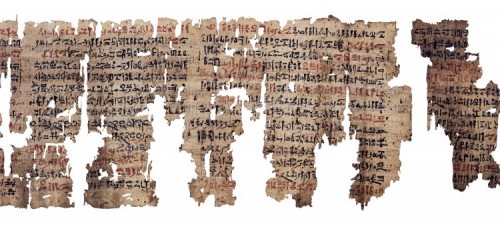
The London Medical Papyrus
The Edwin Smith Papyrus (c. 1600 BCE) is the oldest work on surgical techniques.
The Ebers Papyrus (c. 1550 BCE) treats cancer, heart disease, diabetes, birth control, and depression.
The Berlin Medical Papyrus (also known as the Brugsch Papyrus, dated to the New Kingdom, c. 1570 - c. 1069 BCE) deals with contraception, fertility, and includes the earliest known pregnancy tests.
The Hearst Medical Papyrus (dated to the New Kingdom) treats urinary tract infections and digestive problems.
The Chester Beatty Medical Papyrus, dated c. 1200 BCE, prescribes treatment for anorectal diseases (problems associated with the anus and rectum) and prescribes cannabis for cancer patients (predating the mention of cannabis in Herodotus, long thought to be the earliest mention of the drug).
The Demotic Magical Papyrus of London and Leiden (c. 3rd century CE) is devoted entirely to magical spells and divination.
Each doctor had his or her own area of specialization and would consult the text corresponding to their field.
MEDICAL TREATMENT
Doctors began their diagnosis and treatment of a patient by examining the person and coming to one of three conclusions:
1. I can treat this condition.2. I can contend with this condition.3. I can do nothing for this condition.
Cancer, for example, had no more a cure then than it does today. Heart disease could be contended with through spells, medicine, and a change in one's diet. Skin and eye problems could be treated through salves, spells, and incantations. Once the doctor had determined whether anything could be done, the next step was to understand the nature of the problem. It was a given that the root cause was some supernatural entity, but the physician had to understand how that entity was attacking the body and why. The patient would be asked a series of questions to determine what they were experiencing as well as what they might have done to deserve the affliction.
One example of this procedure, from the Ebers Papyrus, addresses the problem of a patient who presents with what appears to be a "mortal illness". The physician is instructed to examine the patient carefully, and if the body seems free of disease except for "the surface of the ribs," the doctor should then recite a spell against the disease and prescribe a mixture of bloodstone, red grain, and carob, cooked in oil and taken over the next four mornings with honey. The spell to be recited is not specified in this case but in many others is given.
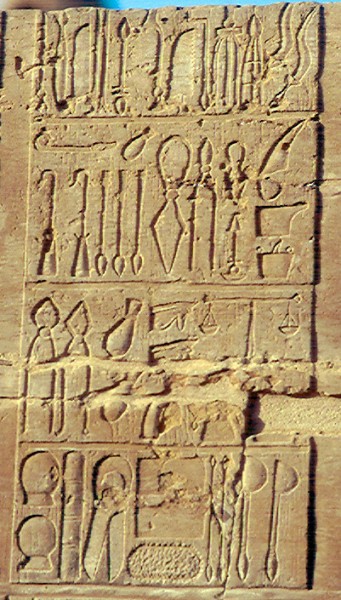
Egyptian Medical Instruments
Medicines were usually mixed with beer, wine, or honey, and each of these had their own medicinal properties. Beer was the most popular drink in ancient Egypt, frequently serving as one's wages, and was considered a gift from the gods for the people's health and enjoyment. Tenenet was the goddess of beer, but the drink was most frequently associated with Hathor (one of whose epithets was 'The Lady of Drunkenness'). Spells invoking Hathor appear in the medical texts, but an especially interesting one calls upon Set.
Although Set originally seems to have been a protective god, throughout most of Egypt's history, he was the arch-villain who murdered his brother Osiris and plunged the land into chaos. He does appear in certain eras, though, as a protector and champion, and his name is even taken by some kings (Seti I, for example) who especially honored him. In one spell, recited to cure an unnamed illness, Set is invoked to lend his power to the medicine prescribed: beer. Egyptologist Alison Roberts notes that "Set's influence in the beer drunk by the sick person is so great that tormenting demons become confused and are borne away, leaving the person restored to health" (98). The spell reads, in part:
There is no restraining Set. Let him carry out his desire to capture a heart in that name 'beer' of his - To confuse a heart, and to capture the heart of an enemy. (Roberts, 98)
Beer was thought to "gladden the heart" in general, but when one was ill, medicines mixed with beer - and combined with spells - were thought particularly effective. Beer and wine were also prescribed for children and nursing mothers. A prescription from the Ebers Papyrus for childhood incontinence calls for the mother to drink a cup of beer mixed with grass seeds and cyperus grass for four days while breastfeeding the child.
The Kahun Gynaecological Papyrus focuses primarily on the uterus as the source of a woman's ailments and frequently prescribes "fumigation of the womb" as a cure. This would be accomplished by directing incense smoke or inserting incense into the woman's vagina. Prescriptions frequently mention "discharges of the womb" as the primary cause for problems, as in this passage:
Examination of a woman aching in her rear, her front, and the calves of her thighs
You should say of it 'it is discharges of the womb'.
You should treat it with a measure of carob fruit, a measure of pellets, 1 hin of cow milk
Boil, cool, mix together, drink on 4 mornings. ( Column I.8-12)
A test for fertility suggests placing an onion in a woman's vagina; if the scent of the onion was on her breath the next morning, she was considered fertile. Pregnancy tests are also addressed in which vegetation (specifically emmer and barley) is doused with a woman's urine; if the plants flourish, she is pregnant. It was also thought one could determine the sex of the child in this same way. If emmer seeds sprouted first, the child would be female; if the barley responded first, the child would be male.Contraceptives are also described in the text with one method cited as the insertion of a plug of crocodile dung into the vagina.Spells accompanying these procedures are also given to make them more effective.

Kahun Gynaecological Papyrus
The Demotic Magical Papyrus is completely devoted to spells, rituals, and incantations for summoning the gods and spirits for assistance, and some of these are thought to instruct the physician-magician on how to raise the dead. While this may be so, it seems the purpose of those spells was primarily to gain insight into the cause of death by summoning the spirit of the deceased. Spells are given to summon a drowned man or a murdered man, for example. To summon the spirit of the drowned man, the doctor should put a sea-carob stone (an object not yet identified) on the brazier and call out his name, while for the murdered man, one places the dung of an ass and an amulet of Nephthys on the brazier. To disperse spirits, the dung of an ape was placed on the fire.
Not all of the medical texts involved magical spells in the treatments, however. The Edwin Smith Papyrus, for the most part, gives straightforward procedures in treating injuries. Beginning with the head, the text goes down the body giving the type of injury sustained and suggesting how best to deal with the problem. Although eight magic spells appear on the back of the papyrus, the majority of the work is concerned entirely with medical procedures addressing injuries directly without an appeal for supernatural intervention.
CONCLUSION
The ancient Egyptians were acquainted with the concept that disease could be naturally occurring as early as the beginning of the Old Kingdom (c. 2613-2181 BCE). The architect Imhotep (c. 2667-2600 BCE), best known for his work on the king Djoser 's Step Pyramid at Saqqara, had written medical treatises emphasizing this possibility and claiming that disease was not necessarily a punishment from the gods or the work of evil spirits. His ideas were not ignored either as he was highly respected for his work and was later deified as a god of medicine and healing.
Even so, lacking any other probable cause for sickness, the Egyptians continued to believe in supernatural elements influencing one's health. Although the title of swnw (general practitioner) and sau (magical practitioner) appear in inscriptions relating to doctors, magic was important for both. This is not surprising as human beings will always seek out a reason for any given experience. When faced with some seemingly inexplicable phenomenon, one will find a cause for it in that which seems most reasonable to one's belief system.
The earliest myths were told to explain the rising of the sun, the change of seasons, the reason for suffering; and these all had a supernatural element to them. The gods were present in every aspect of the ancient Egyptians' lives. When it came to determining the root cause of disease, therefore, they looked to that same source and implemented spells and rituals to call upon their gods for health and well-being with the same confidence people in the present day submit to any treatment prescribed by the modern medical profession.
See other Related Content for Ancient History ››
LICENSE
Article based on information obtained from these sources:with permission from the Website Ancient History Encyclopedia
Content is available under License Creative Commons: Attribution-NonCommercial-ShareAlike 3.0 Unported. CC-BY-NC-SA License